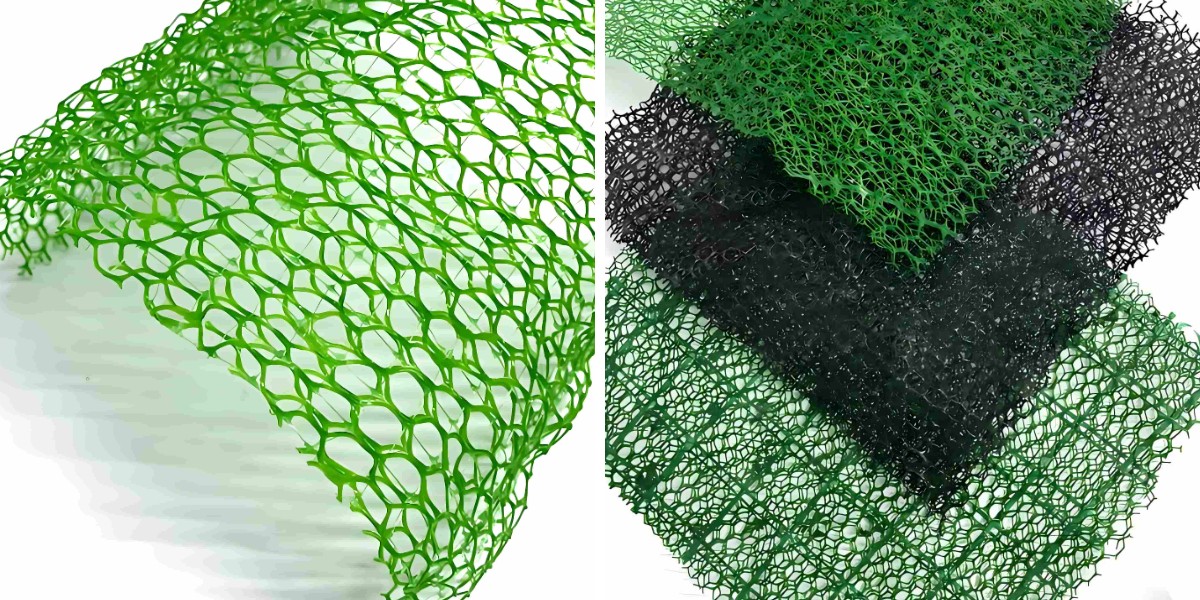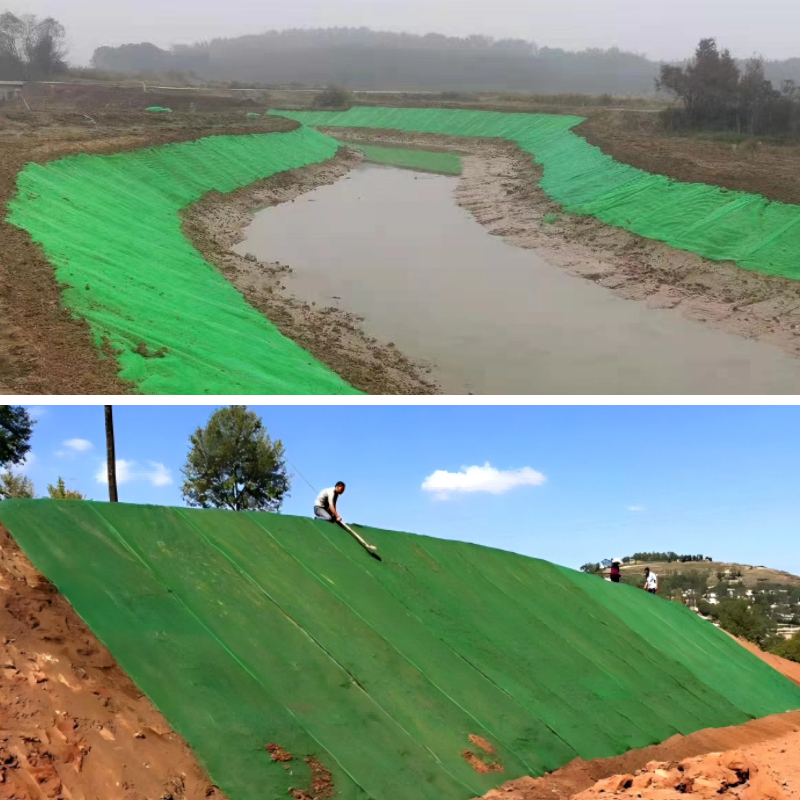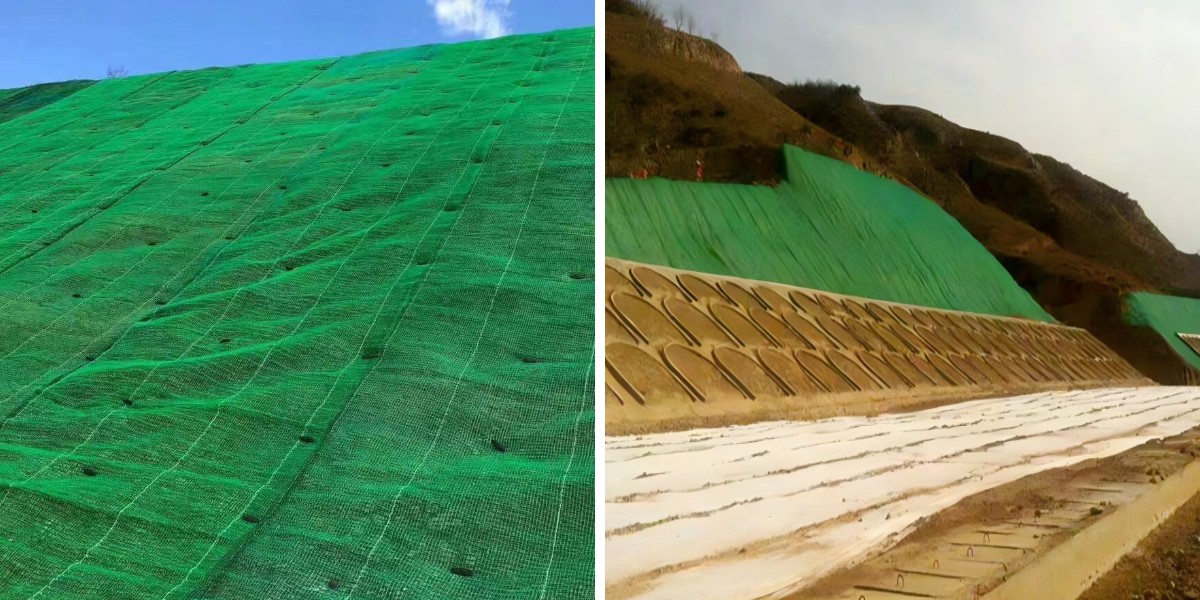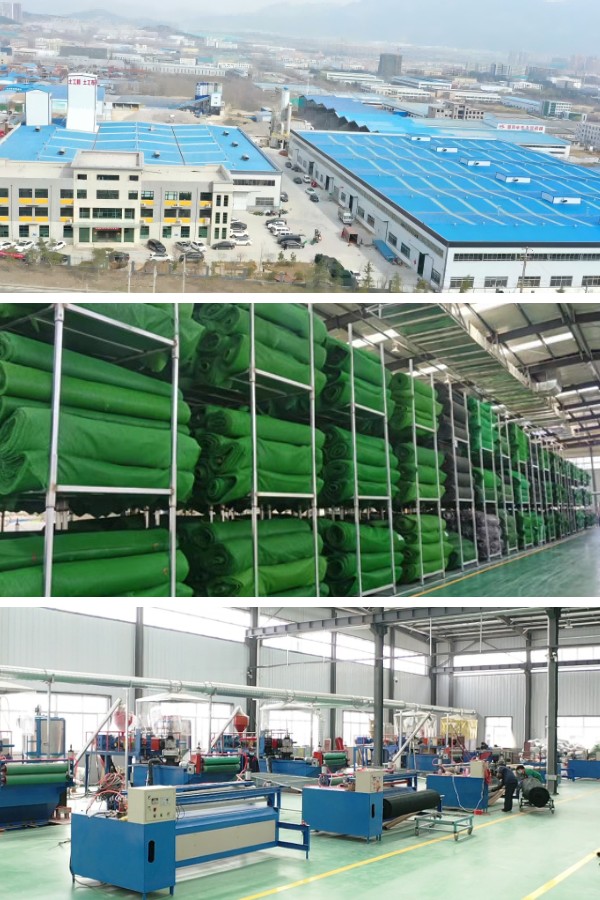How Geomat Helps in Roadside Erosion Prevention
Roadside erosion is a silent danger to infrastructure, causing potholes, soil loss, and even structural harm to highways and nearby roads over time. Factors like heavy rainfall, flowing water, and vehicle vibrations weaken the soil around avenue edges, foremost to steeply-priced repairs and security hazards. Fortunately, geosynthetic materials—specifically geomat—have emerged as a dependable reply to mitigate these risks. This article explores how geomat technologies, such as 3D geonet, flood protection matting, and revetment mesh, protect roadsides, decorate durability, and restrict long-term protection costs.
1. Understanding Roadside Erosion: Causes and Consequences
Before delving into geomat’s role, it’s essential to apprehend why roadside erosion takes vicinity and its far-reaching impacts.
Key Causes of Roadside Erosion
Heavy Rainfall: Intense downpours create flooring runoff, which washes away topsoil from avenue shoulders and embankments. Over time, this runoff carves ruts and gullies, destabilizing the road’s foundation.
Flooding: Prolonged rain or storm surges submerge avenue edges, softening soil and making it inclined to collapse. Floodwaters additionally raise particles that scours the roadside, worsening erosion.
Soil Composition: Sandy or silty soils (common in many regions) lack cohesion, making them less tough to erode than clay-rich soils. Road building often disturbs natural soil layers, in a same way reducing stability.
Vegetation Loss: Clearing vegetation for avenue enlargement receives rid of root structures that preserve soil in place. Without this herbal anchor, erosion accelerates.
Consequences of Unchecked Erosion
Infrastructure Damage: Eroded soil undermines avenue pavements, predominant to cracks, potholes, and even lane closures. In extreme cases, embankments may also additionally slide, blockading internet website on line visitors and endangering lives.
Environmental Harm: Eroded soil washes into shut via rivers, lakes, and streams, inflicting sedimentation. This disrupts aquatic ecosystems, clogs waterways, and degrades water quality.
High Maintenance Costs: Municipalities and transportation companies spend heaps of hundreds every year repairing erosion-related damage. Preventive measures like geomat are some distance more properly value than reactive repairs.
Geomat addresses these troubles with the useful resource of the usage of reinforcing soil, controlling runoff, and defending susceptible areas—starting with contemporary designs like 3D geonet.
2. 3D Geonet: A Core Component of Geomat for Erosion Control
3D geonet is a three-dimensional, porous geosynthetic form that kinds the spine of many geomat systems. Unlike flat geotextiles, its raised, grid-like graph creates a impervious framework for soil, vegetation, and awesome defensive materials. Here’s how it enhances roadside erosion prevention:
Soil Reinforcement and Stabilization
3D geonet’s interconnected cells entice and hold soil particles, stopping them from being washed away by means of way of runoff. When set up on street shoulders or embankments, it distributes weight evenly, lowering soil compaction and settlement. This reinforcement is in particular essential for steep slopes, where gravity exacerbates erosion risks. For example, on highways with 30+ diploma embankments, 3D geonet has been installed to restrict soil loss through way of up to 70% in contrast to unprotected areas.
Promoting Vegetation Growth
Vegetation is one of the most magnificent herbal erosion manipulate tools—but organising it on eroding roadsides is challenging. 3D geonet provides a secure base for seeding or sodding. Its porous structure permits water, air, and nutritional vitamins to attain plant roots, accelerating germination and growth. Over time, the vegetation’s root buildings intertwine with the geonet, creating a “living barrier” that in a similar way strengthens the soil. This synergy between 3D geonet and vegetation ensures long-term erosion resistance, even in harsh local local weather conditions.
Compatibility with Other Geomat Solutions
3D geonet doesn’t work in isolation—it integrates seamlessly with different geosynthetics to embellish protection. For instance, combining it with flood safety matting (discussed next) creates a multi-layered computing device that withstands each floor runoff and temporary flooding. This versatility makes 3D geonet a go-to want for engineers designing entire roadside erosion manipulate plans.
3. Flood Protection Matting: Shielding Roadsides from Water Damage
Flooding is one of the most awful causes of roadside erosion, then as soon as more flood safety matting—a specialised geomat product—offers centered defense. This durable, flexible fabric is designed to face up to standing water and fast-moving currents, defending street edges for the size of storms and floods.
How Flood Protection Matting Works
Flood protection matting is commonly made from high-density polyethylene (HDPE) or polypropylene, supplies considered for their resistance to water, UV rays, and chemical degradation. Its interlocking plan approves for reachable set up along avenue shoulders, culvert inlets, and low-lying areas inclined to flooding. When water rises, the matting acts as a bodily barrier, preventing soil from being scoured with the resource of currents. Its porous surface in addition lets in greater water to drain slowly, lowering hydrostatic stress that can push soil away from the road.
Applications in High-Risk Areas
Culvert and Drainage Zones: Culverts are frequent elements of erosion, as fast-flowing water exiting the pipe can erode the surrounding soil. Flood security matting hooked up spherical culvert shops dissipates water energy, stopping gully formation.
Low-Lying Roads: Roads in floodplains or shut to water our our our bodies are inclined to transient submersion. Flood security matting traces these areas to preserve soil intact, even when underwater for days. Unlike sandbags (which are labor-intensive and temporary), matting gives long-term safety with minimal maintenance.
Coastal Roads: Saltwater flooding and storm surges pose special risks to coastal roads. Flood security matting’s corrosion-resistant properties make it great for these environments, defensive roadside soil from saltwater damage and erosion.
When paired with revetment mesh, flood safety matting creates an even greater sturdy protection in the route of water-related erosion.
4. Revetment Mesh: Reinforcing Embankments and Slopes
Roadside embankments and slopes are amongst the most erosion-prone areas, as they face constant publicity to rain, wind, and runoff. Revetment mesh—a heavy-duty geomat product—reinforces these slopes, stopping crumple and soil loss.
Design and Function of Revetment Mesh
Revetment mesh is a woven or knitted geosynthetic fabric with immoderate tensile strength. It is reachable in quite a number thicknesses and mesh sizes, tailored to the slope’s steepness and soil type. When installed, the mesh is anchored to the slope’s base and top, developing a taut, protecting layer. This layer:
Absorbs the power of falling rain and runoff, lowering soil displacement.
Holds soil in location even as enabling water to drain, preventing waterlogging (which weakens soil).
Protects latest vegetation from being uprooted via sturdy currents or wind.
Real-World Benefits for Road Infrastructure
In mountainous regions, the location roads are regularly developed on steep embankments, revetment mesh is a game-changer. For example, a motorway mission in a hilly location in Europe used revetment mesh to stabilize a 45-degree embankment. Before installation, the embankment required annual repairs due to erosion; after mesh installation, renovation fees dropped by using 80%, and no essential erosion exceeded off over 5 years.
Revetment mesh moreover enhances 3D geonet and flood protection matting in complete systems. For instance, on a avenue shut to a river, engineers would possibly set up 3D geonet to stabilize soil, cowl it with revetment mesh to face up to river currents, and add flood protection matting in low-lying areas to protect towards flooding. This multi-layered strategy ensures most safety in opposition to all erosion triggers.
5. How to Choose the Right Geomat Solution for Your Roadside Project
Not all geomat merchandise are created equal—selecting the appropriate one depends upon on your project’s particular needs. Here are key elements to consider:
Assess Erosion Risks
First, select out the most necessary erosion threats: Is the region susceptible to heavy rainfall, flooding, or steep slopes? For flood-prone zones, prioritize flood security matting. For steep embankments, revetment mesh or 3D geonet (for vegetation support) is ideal. If runoff is the main issue, 3D geonet’s soil-trapping structure is most effective.
Consider Soil and Climate Conditions
Sandy soils require increased sturdy reinforcement (like revetment mesh), while clay soils may moreover moreover advantage from 3D geonet to beautify drainage. In cold climates, select out geomat resources that face up to freezing and thawing (e.g., HDPE). In coastal areas, decide for corrosion-resistant merchandise to stand up to saltwater.
Evaluate Installation and Maintenance Needs
Some geomat merchandise (like interlocking flood safety matting) are convenient to install, making them superb for speedy repairs. Others (like 3D geonet with vegetation) require increased upfront work however furnish long-term, low-maintenance protection. Consider your team’s perception and finances when figuring out on a solution.
Consult with Geosynthetic Experts
Engineers and geosynthetic specialists can habits internet site assessments to endorse the fine geomat combination. They can in addition grant statistics on performance, durability, and cost-effectiveness, ensuring your undertaking meets local insurance policies and long-term infrastructure goals.
6. The Future of Geomat in Roadside Erosion Prevention
As nearby nearby climate alternate intensifies—bringing greater acquainted heavy rains, floods, and excessive weather—geomat utilized sciences will develop to be even greater necessary for roadside protection. Innovations like biodegradable geomat (for eco-sensitive areas) and wise geomat (with sensors to reveal soil moisture and erosion risks) are already in development. These tendencies will make geomat large sustainable, efficient, and adaptable to altering conditions.
Additionally, governments and transportation agencies are increasingly greater prioritizing preventive erosion manipulate to decrease security costs. Geomat’s verified tune record—lowering restore fees by 50-80% in many projects—makes it a most low-cost funding for both metropolis and rural avenue networks.
Conclusion
Roadside erosion is a costly, unsafe problem, on the other hand geomat affords a powerful solution. From 3D geonet’s soil stabilization and vegetation honestly useful aid to flood safety matting’s water resistance and revetment mesh’s slope reinforcement, these applied sciences work by ability of myself or collectively to protect roadsides. By choosing the first-rate geomat reply for your project’s needs, you can protect infrastructure, retain the environment, and save cash on long-term maintenance. As local neighborhood weather dangers grow, geomat will proceed to be a cornerstone of resilient, sustainable avenue design—ensuring safe, dependable transportation for years to come.
Contact Us
Company Name: Shandong Chuangwei New Materials Co., LTD
Contact Person :Jaden Sylvan
Contact Number :+86 19305485668
WhatsApp:+86 19305485668
Enterprise Email: cggeosynthetics@gmail.com
Enterprise Address: Entrepreneurship Park, Dayue District, Tai 'an City,
Shandong Province









